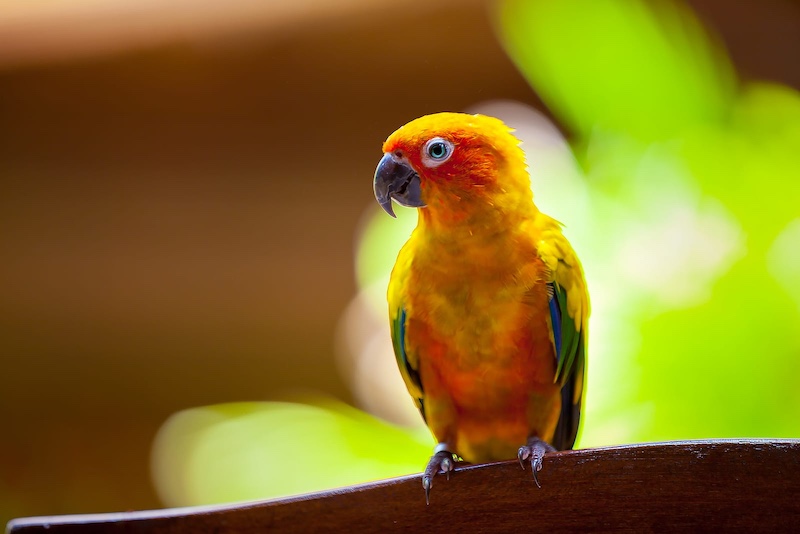Parrots can talk because they have a unique brain structure paired with a specialized vocal organ called the syrinx, which allows them to mimic sounds, including human speech. Their social nature drives them to learn and imitate voices to communicate and bond with their flock or human caregivers. This combination of physical ability and social motivation makes parrots capable of vocal learning that few other animals possess.
Their intelligence also plays a role, as some species can associate sounds with meanings, not just repeat words. This cognitive skill allows them to use speech in context, enhancing their communication abilities beyond simple mimicry. Understanding these factors helps explain why parrots can talk, while most other animals cannot.
Understanding Parrot Vocalization
Parrots communicate through a combination of physical adaptations and learned behaviors. Their ability to produce complex sounds arises from specialized anatomy and cognitive skills. Differentiating between mimicry and true communication is essential to understanding parrot vocalizations.
How Parrots Produce Sounds
Parrots generate sounds using a unique organ called the syrinx, located near the base of their trachea. Unlike mammals, parrots lack vocal cords. Instead, the syrinx vibrates to create sound as air passes through.
They can independently control different parts of the syrinx, allowing them to produce two sounds simultaneously. This capability enables more complex vocalizations than most other bird species.
Sound production involves precise coordination between breathing and muscle control. This complexity supports the parrots’ ability to imitate diverse noises from their environment, including human speech.
Anatomy of the Parrot Syrinx
The syrinx in parrots is structurally more intricate than in many birds. It contains muscles that adjust tension and position, shaping the sound output. This flexibility is crucial for producing varied tones and pitches.
Parrots have a robust vocal control center in their brains linked to the syrinx. This neurological adaptation supports learning and repeating sounds they hear.
The syrinx is positioned where the trachea splits into the bronchi, which enables airflow modulation from both sides. This anatomical feature also helps parrots mimic sounds with clarity and precision.
Mimicry Versus True Speech
Parrots mimic sounds by hearing and reproducing noises rather than generating original speech. However, studies show some species, like the African gray parrot, associate words with meanings, indicating cognitive understanding.
Mimicry serves several functions, including social bonding and territory establishment in the wild. Parrots often learn different dialects depending on their social group.
Despite not forming language like humans do, parrots use learned vocalizations to communicate intent and respond appropriately, suggesting a form of meaningful interaction beyond mere repetition.
Cognitive Abilities Behind Parrot Speech
Parrots possess advanced mental functions that allow them to not only imitate sounds but also process and use them meaningfully. Their brain structures support learning, memory, and social interaction, which are crucial for their speech-like communication.
Learning and Memory in Parrots
Parrots have strong learning capabilities that enable them to acquire a large vocabulary. Some, like the African Grey, can learn up to 1,000 words through repetition and association. They do not simply mimic sounds; they remember words and link them to objects or actions.
Their memory supports the retention of complex vocal patterns over long periods. This ability is tied to specialized brain areas such as the cortico-basal ganglia circuit, which processes and stores vocal information. Parrots also demonstrate problem-solving skills that involve recalling past experiences to adapt their vocalizations effectively.
Social Intelligence and Communication
Parrots use their vocal skills as part of social interaction. They imitate human speech to engage with companions, signaling attention or expressing needs. Their social intelligence allows them to interpret context, showing a level of understanding beyond random mimicry.
In the wild and captivity, parrots communicate with other birds using specific calls. Mimicking human sounds can be seen as an extension of this social behavior. These birds can distinguish between familiar and unfamiliar voices and adjust their responses accordingly, indicating an ability to comprehend social cues.
Why Parrots Imitate Human Speech
Parrots mimic human speech primarily to interact with their environment and form connections. Their ability to copy sounds serves specific functions related to communication and adapting to their surroundings.
Social Bonding with Humans
Parrots use imitation as a way to establish and maintain social bonds with humans. In captivity, parrots treat their human caregivers as part of their flock. Mimicking human speech strengthens this bond by enabling interaction that resembles natural flock communication.
This vocal behavior helps parrots express needs, emotions, and desires. It also signals familiarity and trust. When a parrot repeats words or phrases, it mirrors social behavior observed in the wild, where parrots rely on calls and sounds to stay connected with their group.
Environmental Influences
The environment significantly shapes a parrot’s capacity and motivation to imitate human speech. Parrots raised in stimulating, language-rich settings tend to acquire more vocabulary compared to those with less interaction.
Exposure to consistent, clear speech, and social cues influences their learning process. The sounds parrots hear frequently become part of their vocal repertoire. Parrots living alone or in less interactive environments may mimic less due to reduced social incentives.
Both interaction frequency and sound variety impact how and why parrots imitate human vocalizations.
Comparing Parrots to Other Talking Animals
Parrots’ vocal abilities differ fundamentally from those of other animals known for sound imitation. Their unique anatomy and cognitive skills distinguish them from most birds and mammals.
Differences from Songbirds
Unlike many songbirds, parrots have a specialized vocal organ called the syrinx located at the base of the trachea. This organ allows them to produce a wide variety of sounds, including human speech-like noises. Songbirds also have a syrinx, but it is structured differently, enabling them primarily to sing rather than mimic complex sounds.
Parrots use their tongue and beak skillfully to shape sounds, which gives them greater control over their vocalizations compared to songbirds. Additionally, parrots exhibit higher cognitive functions related to mimicry, often linking sounds to meanings rather than merely repeating them.
Comparison with Mammals Like Dolphins
Dolphins and some other mammals mimic sounds but rely mostly on echolocation clicks and whistles, which differ from human speech patterns. Unlike parrots, dolphins do not have vocal cords but produce sounds with air movement in their nasal passages.
The cognitive processes in dolphins allow them to recognize patterns and learn new sounds, but their anatomy limits human-like speech production. Parrots combine both the necessary anatomy and high intelligence, enabling them to reproduce human words and associate these sounds with objects or actions. This dual capability sets parrots apart from most mammals in vocal mimicry.
Limitations and Myths About Parrot Talking
Parrots’ ability to talk is often misunderstood. Their speech has clear limits, and popular beliefs about their understanding of language can be inaccurate or exaggerated.
Limits of Parrot Vocabulary
Parrots can learn many words and phrases, but their vocabulary is usually limited compared to humans. They tend to repeat sounds they hear frequently, rather than creating original sentences.
The size of a parrot’s vocabulary depends on species, individual personality, and training. African Greys and Amazons are more likely to develop larger vocabularies. However, some parrots may never speak at all.
Training requires patience and consistency. Parrots mimic sounds, but this does not guarantee clear or meaningful conversation. Their vocal skills depend on exposure to human speech and social interaction.
Truth About Parrot Understanding
Parrots can associate certain words with objects or actions through repetition and context. This suggests some level of comprehension beyond simple mimicry.
However, parrots do not understand language with the complexity humans do. They lack grammar skills and do not form abstract ideas through speech.
Studies with African Greys, such as the parrot named Alex, show some birds recognize categories and quantities. Still, this cognitive ability differs from true language comprehension.
In summary, parrots’ speech reflects memory and learning rather than full understanding of meaning or syntax.

